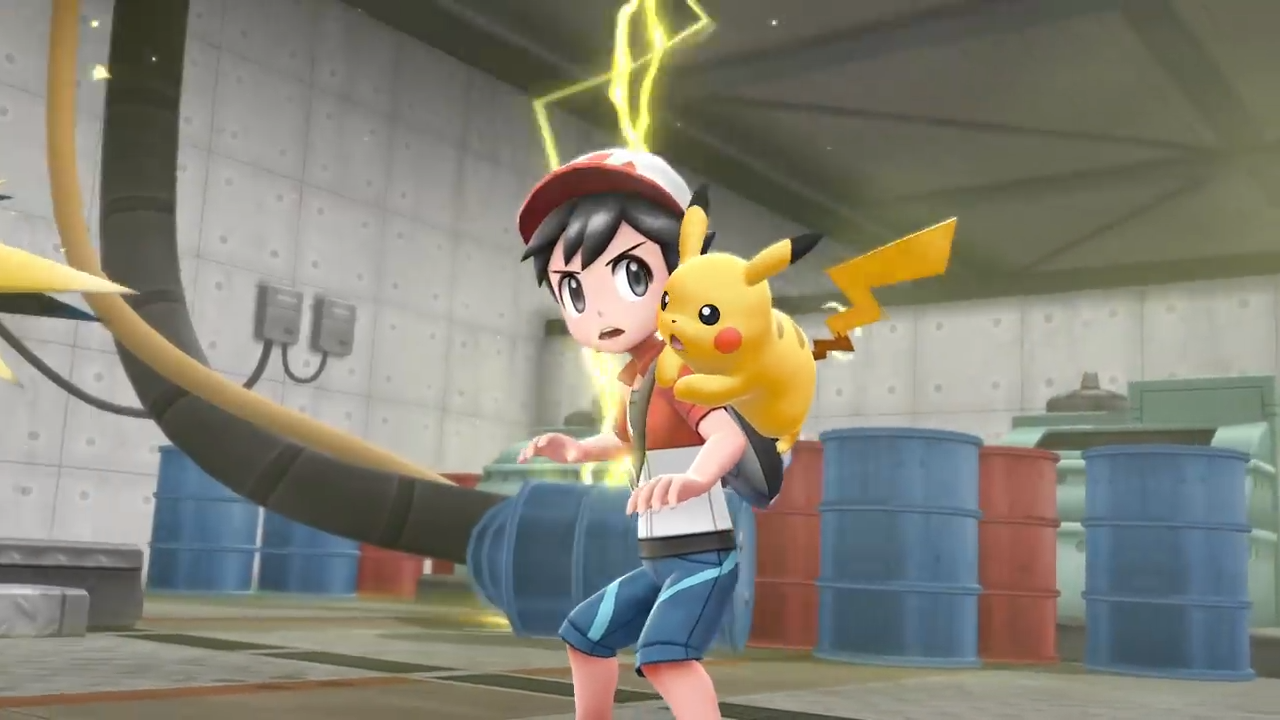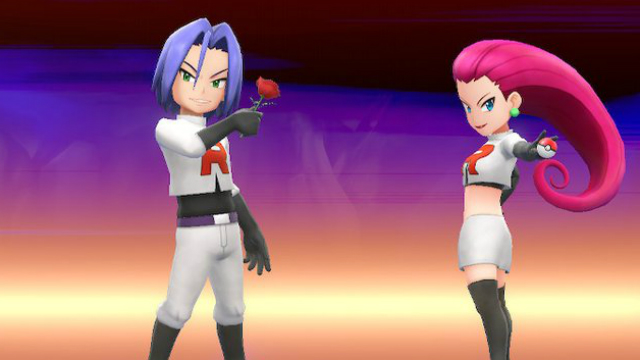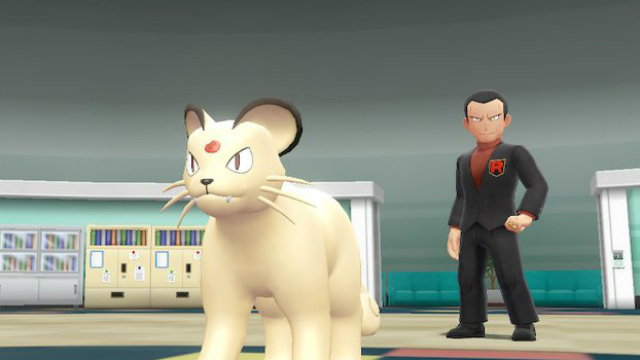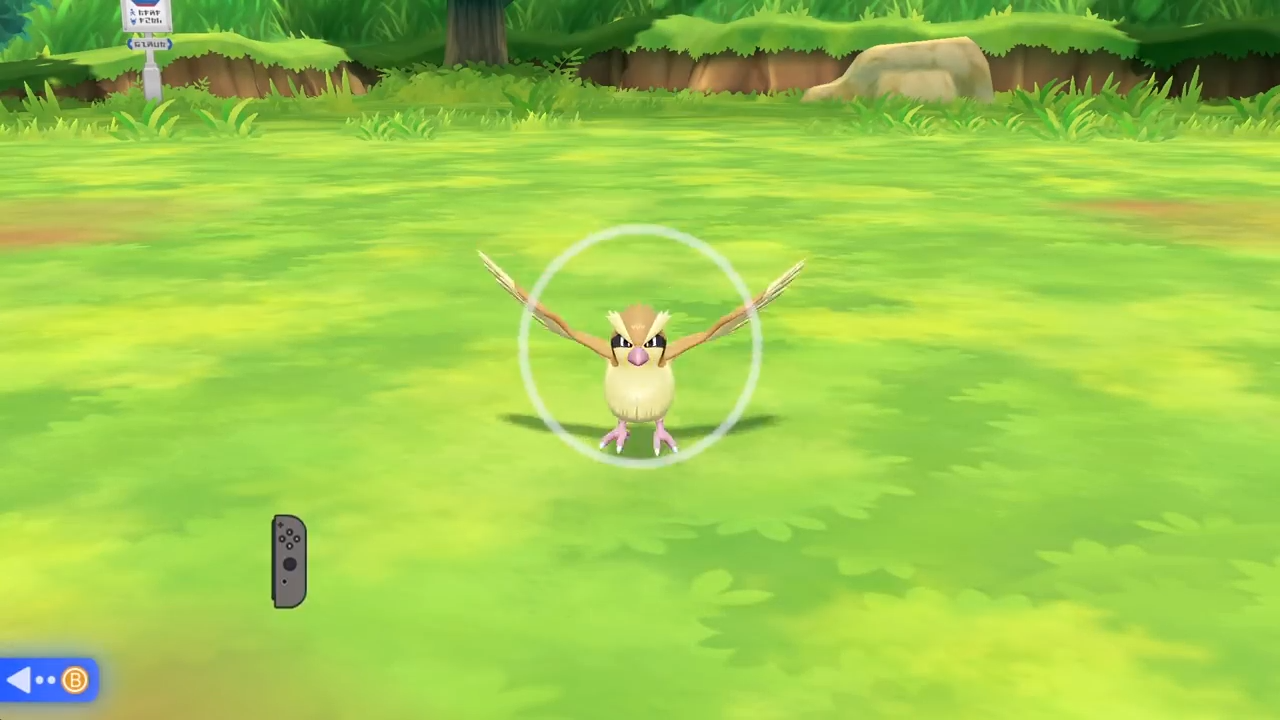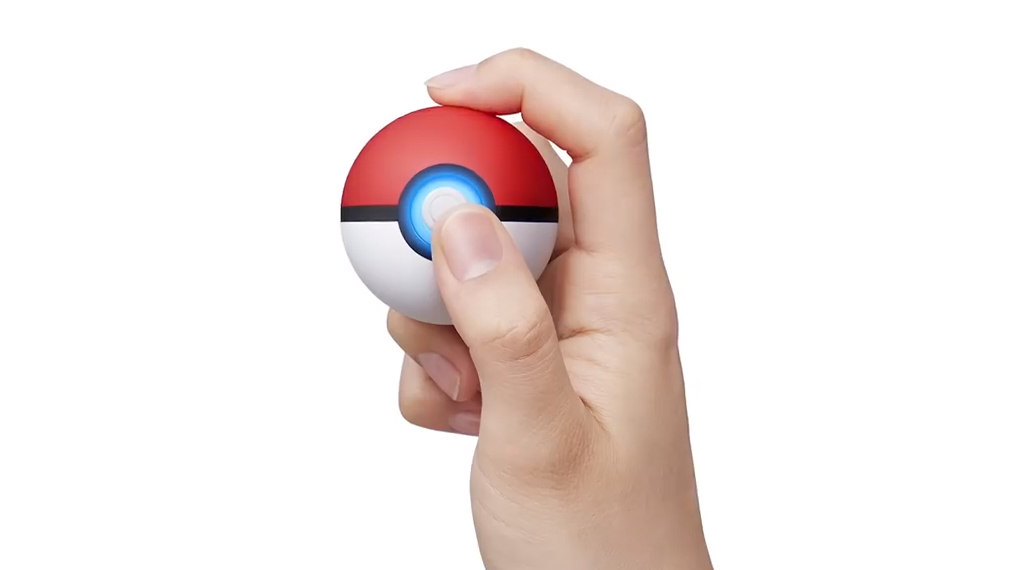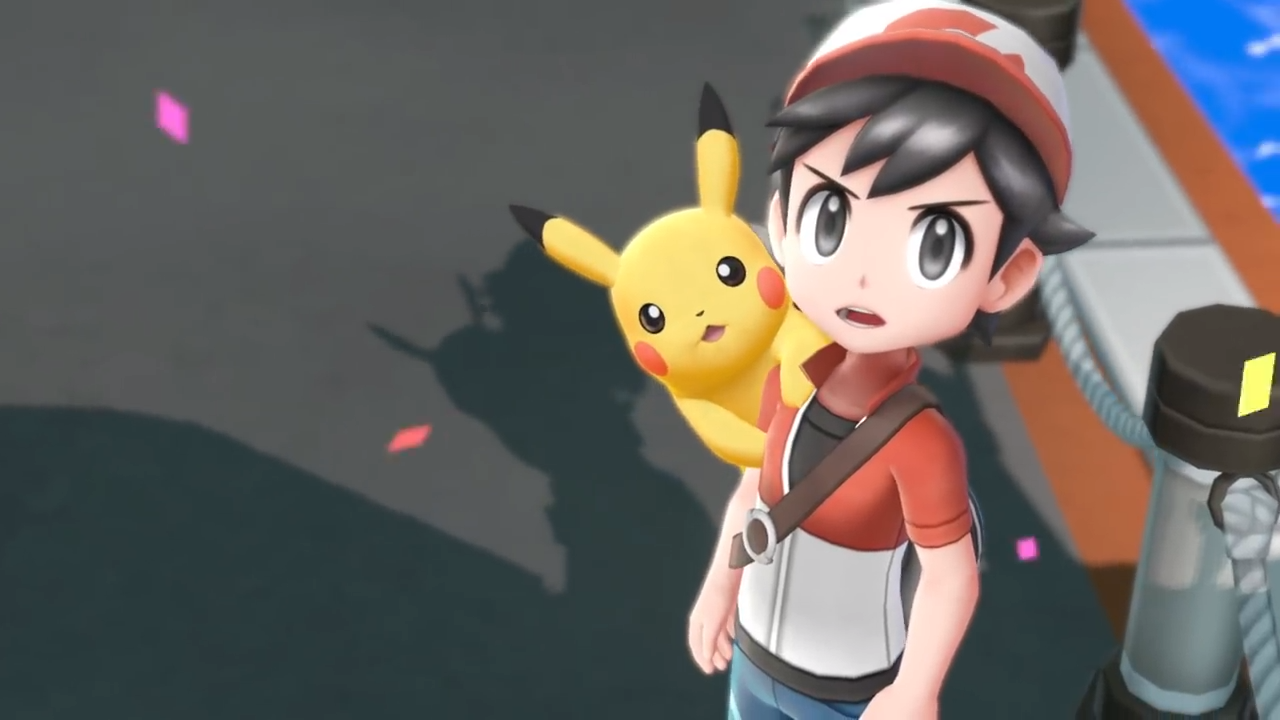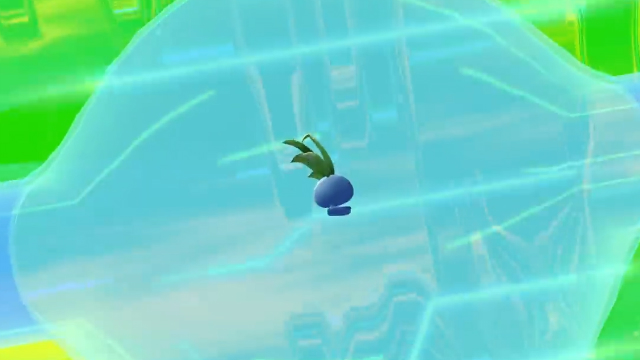The first thing I had to do when playing Pokemon Let’s Go was to let go of the innate prejudice I felt against it as a long time Pokemon main series fan. According to Nintendo, Pokemon Let’s Go is the first in a potential series of games independent from the core entries, so I’ve reviewed it as such.
Pokemon Let’s Go is a pseudo-remake of Pokemon Yellow, and as such is a modified take on the same adventure we loved so dearly in Pokemon Red, Blue, and Yellow, and Pokemon Leaf Green and Fire Red. However, unlike Pokemon Leaf Green and Fire Red, which basically replicated Red and Blue‘s adventure, Pokemon Let’s Go introduces some massive changes to multiple game systems while still retaining many of the fundamentals of the core games.
Ostensibly, the changes introduced in Let’s Go are to make the series welcoming to new players, those who may have been introduced to the franchise on the mobile Pokemon Go. They also serve to make the third journey through Kanto more exciting for those who have stuck with the series for decades. However, this has led to a simplification of several systems that may be shocking to those who are more attracted to the training and breeding mechanics of the series.
Pokemon Let’s Go Review – You’re Ten, and It’s Time to Leave Home
As in the core games, in Pokemon Let’s Go you’re like ten-years-old, and it’s time for you to be an adult and go out into the world on your Pokemon adventure. When the game begins you get a pretty limited selection of character options which basically boils down to whether you want to choose a male or female avatar and skin color.
Once you’ve chosen a character, you wake up and your room in Pallet Town, and it’s off to Professor Oak’s lab to get your government-mandated Pokemon companion. One thing leads to another and before you know it you’re out in the grass above Pallet Town trying to get your first Pokemon. If you’re playing Pokemon Let’s Go Pikachu, then you get a Pikachu, and with Pokemon Let’s Go Eevee you’ll predictably get an Eevee.
As always, the story is relatively light in Pokemon Let’s Go. Since this is a pseudo-remake of Pokemon Yellow, you’ll find that many of the story ques are the same. Team Rocket is a focal point here, and you’ll have to take down their operations in several locations as you go. However, the overarching goal is still to complete the eight Kanto gyms, head up Victory Road to Indigo Plateau, and take on the Elite Four to become a Pokemon Master.
The oddest thing about Let’s Go, and what presumably makes it non-canon, is that it seems to take place several years after the events of Red and Blue instead of just being a retelling with some aspects from the anime. Blue (a.k.a. Gary) is your rival’s big brother, and already a powerful Pokemon trainer when you run into them. However, Jesse and James figure prominently in the Team Rocket sections and don’t reference any exploits against Red or Blue, so it seems like this is some sort of alternate timeline.
Pokemon Let’s Go Review – Triple-Take
Other than Blue’s role, though, everything remains much the same as in Pokemon Red, Blue, Yellow, Fire Red, and Leaf Green. Some locations have different layouts, but the general design remains the same.
Your journey through Kanto will put you down the same path (with a bit more freedom) as in previous games and features the same 151 Pokemon (150 if you don’t buy the Poke Ball Plus since that’s the only way you can get a Mew without trading). You can get some of the Alolan variations, and there’s one new Pokemon you can bring over from Pokemon Go, but content-wise, there’s no significant expansion beyond the original Pokemon Yellow.
While the first-gen setting is an excellent intro for new players to the series, it seems like a bit of a missed opportunity to not explore Kanto a few years after the events of Red, Blue, and Yellow. One of the most exciting aspects about Gold and Silver (and their remakes) was the ability to go back to Kanto after you completed the story in Johto, and see what changed.
Putting some new twists on familiar Kanto locations would have made the game more engaging to those who have already made the trip before, and still, offer the introductory setting for new Pokemon players that Let’s Go seems to shoot for. Instead, most of the script is exactly the same as the one you see in Fire Red and Leaf Green, and besides the story with Team Rocket and interactions with your rival, there’s just nothing new here.
Pokemon Let’s Go Review – A Graphical Conundrum
One of the reasons that Pokemon Let’s Go has been so widely anticipated, besides the fact it’s a Pokemon game, is that it marks the first time a full Pokemon RPG has been on a console. The core games have all been released on handhelds, and though Pokemon Let’s Go isn’t a main series game, it’s certainly is a replica of one.
I’m a bit torn as to how Pokemon Let’s Go turned out graphically. It’s crisp, and everything certainly looks nice, but it’s very much just a handheld Pokemon game writ large. Even though there’s a lot more fidelity and screen space to work with, Pokemon still lack detail. I know the series has very established designs for its creatures, but now things like fur, or shading could be rendered, and they’re just not.
I don’t think Pokemon should go the hyper-realistic route. In fact, Detective Pikachu’s lifelike Pokemon tend to give me the creeps. However, I think it’s time that these 20-year-old designs which were made with the Game Boy in mind could use a bit of a refresh.
Animations too were a bit disappointing. Blastoise still can’t shoot water out of his cannons, and Pokemon still just kind of rock forward towards their foes and a thud sound plays, and that’s that. Even the Pokemon cries are still the same first-gen crap. Why do these brightly-colored, HD, Pokemon still sound like they have a Game Boy speaker in their throat? Don’t get me wrong. I’m super nostalgic, but with this being a take on Pokemon Yellow, which itself was an attempt to add more elements from the anime to the first-gen games, why don’t the Pokemon in Let’s Go use the anime cries?
Pokemon Let’s Go Review – To Catch Them is my Real Test
The most significant change from the core series in Pokemon Let’s Go is the capture mechanics. Except for a small number of special encounters, Pokemon Let’s Go adopts the capture system seen in Pokemon Go. This means instead of battling you’re basically just throwing Pokeballs at a Pokemon until they’re caught.
There are, of course, different Pokeballs that have increased capture rates, and you can throw berries at the Pokemon to either get them to calm down and stop dodging your Pokeballs or to stick around longer. However, the main idea is: throw ball, catch Pokemon.
While a lot of the strategy and suspense of catching wild Pokemon has been removed with the new mechanic, one change that comes with Pokemon Let’s Go that I completely and enthusiastically embrace is the removal of random encounters. No more do you have to inch forward through caves and meeting Zubats every 3 seconds. Instead, Pokemon spawn in grass and caves where you can see them.
Having Pokemon visually spawn instead of having random encounters gives multiple advantages. For one, it provides a sense of scale. When an Onyx spawns, it towers over you and gives a great impression of just how massive the Pokemon is. On the opposite end, when a Caterpie spawns, you get to see just how small it is.
With Pokemon being visible on the screen you can also pick and choose which you decide to engage with. I absolutely loved getting to enter an area and just grab the Pokemon I didn’t have. This also allows for a new mechanic called Catch Combos. The more of the same species of Pokemon you catch in a row, the more you build your Catch Combo. The higher the combo, the better the chance for rare Pokemon and shinies to spawn.
Catch Combos give you an opportunity to get multiples of Pokemon like Articuno, Zapdos, and Moltres, that were previously only available once per game. It’s also absolutely fantastic to have an easy and tangible method to increase the chances for shinies to appear.
Another positive change that comes with Pokemon Let’s Go is that the Pokemon Storage System can now be accessed through your bag. Since you’re encouraged to catch a ton of Pokemon, this is a godsend. If you had to trudge back to a PC every time, you wanted to change Pokemon a lot of the endgame stuff would be absolutely miserable.
Unfortunately, Nintendo continues to push their two versions of the same game scheme, so there are some version exclusive Pokemon. Let’s Go Pikachu and Let’s Go Eevee have the same version exclusives that Pokemon Red and Blue did. However, with how much easier it is to trade these days, it’s not worth buying two copies. You can likely just find someone to trade you the Pokemon you need for your version on Reddit somewhere or trade them from Pokemon Go.
Pokemon Let’s Go – Out of Control
The controls for Pokemon Let’s Go are a bit frustrating, especially when it comes to capturing Pokemon. When playing in handheld mode, it’s simple enough. You aim using the hold Switch system and press and release A when the Pokemon is in the center of the screen.
However, if you’re playing in TV mode, you have to use the Joy-Con motion controls to kind of fling the ball at a target. Most of the time this is serviceable enough, but sometimes it seems like the Joy-Cons just lose calibration and your ball ends up going in some random direction. This isn’t helped by the fact that Pokemon move around the screen when you’re trying to catch them. In handheld mode, you can just move the Switch to recenter them, but in TV mode you can’t do this.
It’s also frustrating that the control options are so limited in TV mode. You’re stuck using one Joy-Con held in the upright position. This means you have to either try and awkwardly use one hand for the joystick and one for the face buttons or you have to lift your thumb off the joystick to use them. There’s no alternate method for catching Pokemon either, so no using the Pro Controller, and no bypassing the motion controls if you don’t want or are unable to use them.
For a game that’s supposedly designed to be as accessible as possible, the lack of options when it comes to controls is disappointing. The fact is, even if Nintendo wanted you to absolutely have to use the motion controls, the Pro Controller contains a gyroscope that could be used to toss the ball, and the extra joystick could be used to move the screen.
There’s one more controller option in the form of the Poke Ball Plus. I didn’t buy it because it seems like a weird way to spend $50, but if you’re a real Poke Maniac, you can complete the full, immersive experience with a small, Poke Ball-shaped, controller. In the place of the Poke Ball button, there’s a small joystick and one button on top. Supposedly, you can play the whole game with this thing, and it also functions with Pokemon Go. However, From the looks of it, I would say this is probably the least intuitive, least comfortable way to play the game.
Pokemon Let’s Go Review – To Train Them, Not so Much
With the different capture method, training your Pokemon takes a back seat to the experience of collecting them. While you can still try and get that perfect IV Pokemon, a lot of the complexity of Pokemon training has been removed. Abilities aren’t a factor in Pokemon Let’s Go, and wild Pokemon have wildly high stats in comparison to their counterparts in the core games.
Since you’re not battling wild Pokemon anymore, you’d think training your team would be a lot tougher. In Pokemon Let’s Go, though, it’s the exact opposite. Leveling up Pokemon is an absolute cakewalk. EXP Share is on by default, and just catching Pokemon gets you experience. In fact, catching Pokemon nets you so much XP that fighting trainers is a waste of time.
When you catch a Pokemon, you get a base amount of XP that is proportionate to its level. This is around the same amount of experience you’d get from battling a Pokemon in the wild in the main games. However, you can rack up bonuses by catching them in a certain way. The first time you catch a Pokemon, catching a Pokemon with a nice, great, or excellent throw, or completing a simultaneous catch when you’re playing co-op all net you modifiers that increase the XP you gain when you catch a Pokemon.
This has the effect of making it extremely easy to power level your Pokemon. Pokemon games aren’t exactly the most complex when it comes to the leveling system, but in Pokemon Let’s Go, it becomes somewhat of a joke. Instead of just lowering the difficulty to make the game more accessible, it’s been completely removed. While this isn’t horrendous, it does remove any of the suspense that difficult trainers had in past games.
Another aspect of the core games that has been removed is breeding. Unfortunately, you can no longer breed Pokemon which takes away a mechanic that hardcore players love. This is somewhat offset by the fact that there are other ways to get high IV Pokemon, but it would have been a great addition to the game.
Pokemon Let’s Go – Slowpoking Around
Co-op is an interesting feature that Pokemon Let’s Go brings to the table, but it also ends up being one of the most disappointing. Another player can join your game at almost anytime by just giving the second Joy-Con a shake, and you can spend the whole game together.
The second player has some significant limitations, though. They must stay on the same screen as the leading trainer, and none of the progress you make together does anything for anyone other than the primary player.
It would have been awesome if you could bring a Let’s Go trainer from another save into the game so you could at least train and catch Pokemon together. However, the second player is just a generic support trainer. A support trainer can’t interact with any NPCs, must use Pokemon from the primary trainer’s party, and doesn’t get a chance to keep any Pokemon they’ve caught.
Co-op would basically be like when you give the second controller that’s not plugged-in to your little brother when they want to play with you if not for one fact: Co-op play also completely breaks any challenge that was left in the game.
If you’re playing co-op in Pokemon Let’s Go you’re just a completely OP killing machine. If you face a trainer, no matter if it’s one you find on the side of the road or a gym leader, you can use two Pokemon in every battle at the same time to their one. No one questions this. No one asks why you’re practically killing their Pidgey by using Thunder with Pikachu and Psychic with Kadabra on the same turn.
With co-op you basically just become a huge bully, raiding Kanto with reckless abandon. Since the second player just teleports if you leave them behind, you can pretty much use co-op mode by yourself. The only time that co-op mode can’t be used is during Master Trainer battles and double battles in which the primary trainer must fight two-vs-two.
Pokemon Let’s Go: A Big Step Backward for Connectivity
Some major features that have become series mainstays are missing from Pokemon Let’s Go. There’s no Wonder Trade, no GTS, and online functionality has been reduced across the board. You can now only pick one of two battle modes or conduct a one-to-one trade either locally or online.
The disappointment with online functions was two-fold for me. For one, you now have to enter a unique code made up of a series of Pokemon sprites to connect to other players. As far as I could tell there’s no friends list or anything that makes the process easier.
You also have to have a subscription to the Nintendo Switch Online service to use any of the online functionality of Pokemon Let’s Go. Given how reduced online features are in comparison to the last few gens of Nintendo 3DS Pokemon core titles, it seems ludicrous you have to pay for such a simplified system when the 3DS online was free of charge.
The much-touted Pokemon Go connectivity is also kind of a disappointment. There are only a few options that can be accessed in Pokemon Let’s Go that involve Pokemon Go. You have to make it most of the way through the game, to Fuschia City, and go to the Go Park which replaces the Safari Zone in this game. There you can send one of the original 150, or the new Pokemon, Metram, or its evolution, Melmetal to the Go Park. Once a Pokemon is in the Go Park you can go catch it. Beware, though, you can’t send the Pokemon back to Pokemon Go once it’s been sent to Pokemon Let’s Go.
You can also send 25 of the same type of Pokemon from Pokemon Go to Pokemon Let’s Go to access the Play Yard. Here you can take part in a mini-game where you must round up all 25 Pokemon and bring them to the exit point. If you get all the Pokemon there, you get some candy to boost your Pokemon’s stats.
One cool aspect of the Go Park is the Go Parks themselves. There are twenty different parks, and you can move your Pokemon between them as you like. It’s cool to play around with, as you can move the Pokemon you’ve imported from Go between them and have up to 50 per park.
However, once you’ve caught a Pokemon from a Go Park, there’s no sending them back. With this functionality and the fun of getting to see a bunch of your Pokemon all in one place, I wonder why they didn’t include the option to split up all your captured Pokemon in this manner. I’d have loved to have visited a park with all my water Pokemon hanging out for example.
Pokemon Let’s Go – Go or No-Go?
Pokemon Let’s Go is a pleasant enough game, but only offers a fraction of what core games have to offer. Where it fails most is in its half-hearted implementations of ideas. Things like being able to take part in a Pokemon-Amie-like mini-game with Pikachu or Eevee, but none of the other Pokemon you have, or having connectivity with Pokemon Go without it having any real complexity are a detriment to the game.
Pokemon Let’s Go Pikachu and Let’s Go Eevee are games that are meant to be accessible and liked by longtime Pokemon fans and those new to the franchise alike. However, the watered-down experience has a major chance to turn both types of players off, and Nintendo would have likely been better off making this a full remake of Pokemon Yellow instead of a strange amalgam of the core games and Pokemon Go.
However, there are some aspects of the game I really like. I hope Pokemon spawning on the overworld instead of random battles is a facet that carries over to the next core game, and having the ability to have any of your Pokemon follow behind you during your adventure is something fans have been begging for since Pokemon Heart Gold and Soul Silver.
Pokemon Let’s Go‘s journey through Kanto is excellent for those who want to get nostalgic about the first generation of Pokemon while enjoying the updated graphics and additions presented on the Switch. However, it makes some bizarre design choices and is too easy to satisfy the itch of players who like to compete. Some of the postgame content, particularly seeking out the 153 Master Trainers, will sate that itch a bit, but don’t get confused into thinking this is anything like a core series game.
Pokemon Let’s Go is best approached exactly like Nintendo described it. It’s an experimental side game and in no way a substitute for a main series title. Luckily, we should get a chance to experience a new core title for the Switch next year. As it stands, Pokemon Let’s Go is a decent morsel which will help pass the time until then.
-
Finally does away with random battles in favor of Pokemon spawning on the map.
-
Finally, a Pokemon RPG on console.
-
Is overall a fun experience.
-
Catching mechanics inherited from Pokemon Go remove wild battles.
-
Always on motion controls can be frustrating.
-
The same story we've already seen twice before.
-
Difficulty is practically non-existent, especially when playing co-op.
-
Removes features like breeding and abilities that added a lot of complexity to Pokemon.

